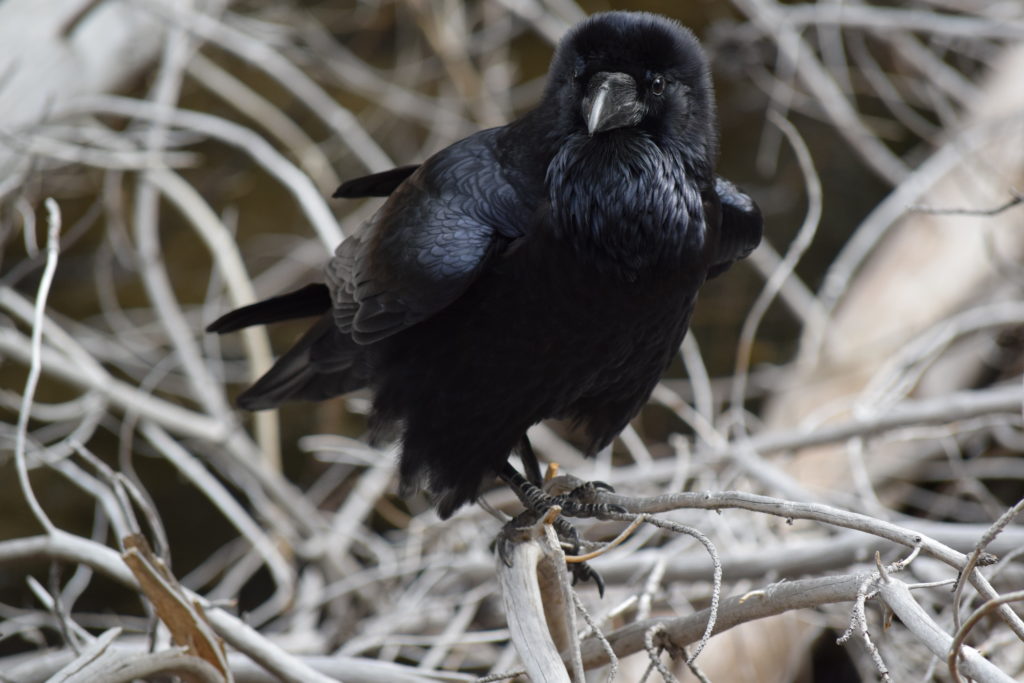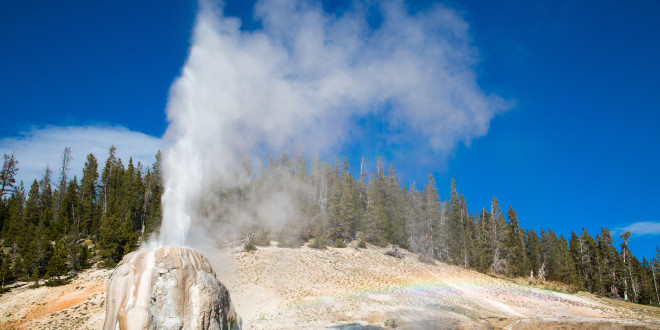Ah, peace at last.
Most of the park hotels are closed now, with the Old Faithful Inn, Lake Hotel and Mammoth Hot Springs Hotel all saying goodbye to its last guests of the season this past weekend. A few hotel employees stay on to get the building buttoned up, but they will be heading out soon, too.
The interior park roads close to wheeled vehicles for the season in a few weeks on Nov. 7, but the Northern Range from Gardiner, Montana to Cooke City, is open year-round.
At this time of year in Yellowstone National Park, not only are you not likely to see a lot of people, but the people you do see you probably already know.
That was the case on a hike at this time last year when a group of us from the Livingston-Gardiner-Emigant-Bozeman area went on a short day hike Saturday down to Lone Star Geyser.
Lone Star is a short, flat popular hike in the Old Faithful area. The trail starts just a few miles east of Old Faithful, where there’s a large parking lot near the Kepler Cascades. It’s about a 2.5-mile, one-way walk to the geyser.
The trail follows an old, still-partially paved roadway along the Firehole River.
And in case you want to read any reviews of the hike, Lone Star Geyser is on Trip Advisor. The website showed a number of reviews, giving it 4.5 stars out of five. One review was headlined “Worth the walk and the wait,” while another said, “Good, but there are others without the long walk.”
The trail is heavily used by humans, so we weren’t expecting to surprise any large mammals. Plus, we were a group of six women, and we made plenty of noise, as you may well imagine. We all carried bear spray, however.
Not far down the trail, we met a raven who squawked at us from nearby trees. It followed us for maybe a quarter of a mile. Clearly, it had seen our kind before, and undoubtedly had some idea of the type and quantity of snacks we carried.
Indeed, if we had left a backpack unattended, the raven might well have unzipped zippers and ripped open Velcro closures, as other park ravens have demonstrated.

On a completely unrelated trip some years prior, a group of us were in a Bombardier snowcoach one winter’s afternoon at Fountain Paint Pots, on the outbound portion of the day trip from West Yellowstone to Old Faithful. A few of us had returned early to the parked snowcoach while others made their way back from the looped boardwalk trail around the thermal features.
Nearby, a raven was rustling through a daypack on an unattended snowmobile. It appeared to nearly have a zipper undone, in its intent to get into the pack’s main compartment, which undoubtedly contained something not only edible, but caloric and tasty.
We all watched intently, curious to see if it succeeded in working the zipper and what the reward might be. But we soon started laughing and joking nervously to one another with our imagined replies to the pack’s owner if he suddenly appeared.
“Uh, yeah, sorry we didn’t stop the raven from destroying your stuff and eating your Pringles, we just wanted to see if it could really work that zipper and what it was going to do when it got inside,” we cracked.
Sadly, our driver returned and we had to leave before we saw the conclusion of our nature lesson.
But back to that Lone Star raven. It followed us, squawked and said “rawk,” as well as made other sounds like “gobble-gobble-gobble,” “cluck-cluck-cluck,” and it even seemed to laugh like a monkey. I wondered if it was mimicking us. We probably do sound like a bunch of monkeys to a raven.
One of our party had an operatic singing voice. She sang a few notes to see if the raven would respond in kind. It did! Although the raven seemed to have a little trouble with the higher notes.
It should be noted, however, that causing an animal to respond to you is against the rules in a national park, although it is awfully hard to resist replying to a raven with a “Rawk!” of one’s own.
The raven clearly expected us to provide treats after all this interaction, but being good junior rangers, we know that feeding the wildlife is not only wrong but also illegal and makes them dependent and unable to fend for themselves. So we did not share our granola bars.
But to tell you the truth, we agreed we all felt a little guilty for not feeding the raven after it ran through its entire repertoire. Walking by without tipping felt like stopping to enjoy a street musician without dropping a few bucks in the hat.
As we neared the clearing around Lone Star, we could hear it erupting, but by the time we got near, the eruption had faded into a steam phase. Recent entries in the nearby logbook said the geyser erupts about every three hours, 20 to 30 feet high.
The geyser structure is about 11 feet high, and consequently must be very old because it takes 32 years for an inch of geyserite — the material deposited by hot springs and geysers — to form.
Lone Star Geyser’s name has more to do with the fact that it stands alone, and nothing to do with the famous nickname for the state of Texas, according to Park Historian Lee Whittlesey in his book Yellowstone Place Names. A hunting party named it in the 1870s, back before hunting was banned in national parks.
While we ate our lunches, we observed some bicyclists headed our way down the trail. Lone Star is one of a couple of trails in the park that allow bikes, but only to Lone Star and no further. As they got closer, we recognized familiar faces—which is not so unusual in a park the size of Delaware and Rhode Island combined. The group included a retired park ranger and her husband, now Gardiner residents, known to all of us either personally or by reputation. We made our greetings and inquiries.
As we all chatted, a bull bison resting nearby looked a little annoyed to see so many people so late in the season, so we finished our snack—no ravens approached—and started back to our cars, giving the bison a wide berth.
In a few weeks, the Lone Star trail will be accessible by another mode of transportation: cross-country skis, when some interior park roads will open to oversnow vehicles for a winter season, just before Christmas.
 Yellowstone Insider Your Complete Guide to America's First National Park
Yellowstone Insider Your Complete Guide to America's First National Park






You must be logged in to post a comment.